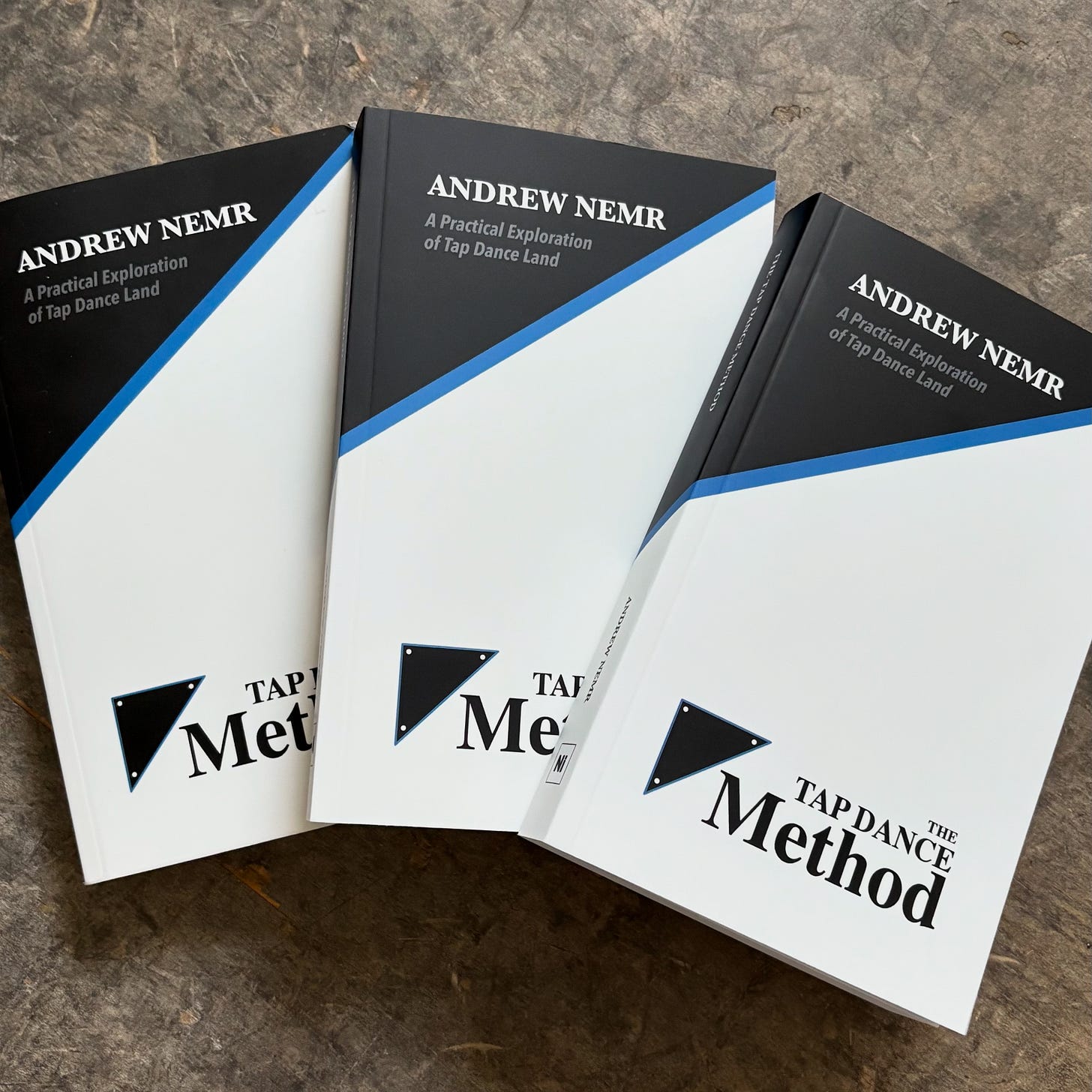On June 1st, a few folks gathered on a zoom call to celebrate a milestone. After more than a decade of writing my first book, The Tap Dance Method was being shared with the world.
The first thing I shared was one of the most embarrassing revelations I had on this journey. Only in the final few months, as the last edits were being made, did I realize how ridiculous it was to attempt to write a book about tap dancing – or any kind of dancing for that matter.
I should have known better. I had been grafted into the oral tradition of tap dance by some of the most respected mentors of my day. They included Gregory Hines, Savion Glover, Jimmy Slyde, Mable Lee, and Tina Pratt, among others. Most of them made it known that they disliked the books that had been written about tap dancing. Yet here I was, finishing up a book that would go out in the world. I was committed, and now conflicted.
The one thing that seems to have made the endeavor okay is that The Tap Dance Method isn’t just a book about tap dancing. It is a book about the kinds of things a tap dancer ends up considering – what they think about, how they think, and how those thoughts express themselves in their dancing.
To that end, the book is for those who are on the journey (or interested in it) – not necessarily those who have found their way. This is key. The Tap Dance Method makes some assertions about how the craft works and what is important for any tap dancer to know and work out. For anyone who has already found their way, these assertions might be jarring. I’ve been jarred when reading tap dance books. My ususal reaction is something along the lines of, “How dare someone interpret for me the very thing I’m living!” So, I get it.
I didn’t write The Tap Dance Method for my peers or contemporaries. I wrote it for the person who would never have the opportunity to sit with folks ten or twenty years ahead of them on the journey. I wrote the book as an artifact of all the things I’ve learned along the way. Well, almost all the things.
Turns out, even a 300-plus page book can’t hold all the things. When creating something like a book there is a process of curation. What makes it in? What is left out? To give me more flexibility I decided to build an online resource center for folks who purchase (and register) their book. This area has additions to various sections of the book – frameworks and vocabulary for example. I also include a list of the questions I’ve been asked most frequently as a tap dance educator and my respective answers.
The book is now out in the world. You can find it here. As folks read and interact with the material, the book will have a life of its own. I seem to be experiencing a similar anxiety to the moment when a child first leaves the home. Whatever comes of the book’s life, my greatest hope is that it will be a catalyst for conversations within the craftwork – a reference for ideas that spur on the practice.


